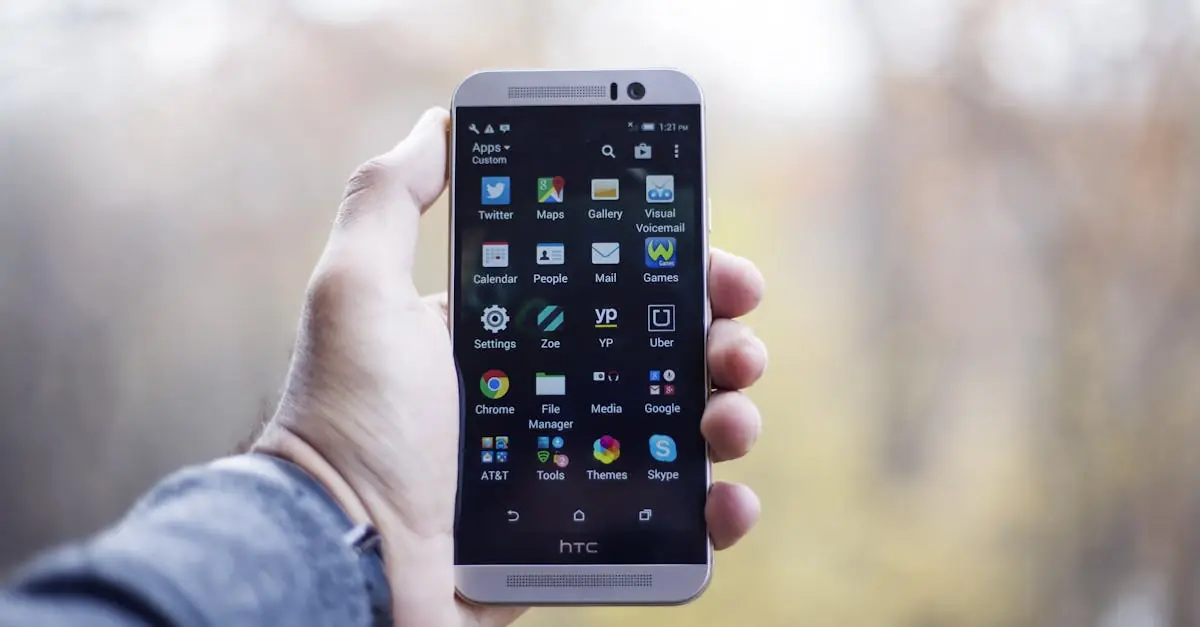Switching phones can feel like moving houses—exciting but overwhelming. You’ve got your favorite apps, games, and tools all set up just the way you like them, and now you have to start from scratch? No way! Transferring apps from one phone to another doesn’t have to be a headache.
Table of Contents
ToggleUnderstanding App Transfer
Transferring apps is essential for seamless transitions between devices. It enables users to retain their favorite applications, settings, and data without hassle.
Importance of Transferring Apps
Transferring apps saves time and effort during a phone switch. Users spend countless hours setting up their devices, so maintaining familiar apps minimizes stress. Users benefit from keeping their preferences and saved data, leading to increased productivity and a smooth transition. Retaining applications also ensures continuity in using tools essential for daily tasks. When users transfer apps, they preserve their personalized experiences and convenience.
Common Scenarios for App Transfer
Common scenarios for app transfers include upgrading to a new phone, switching from Android to iPhone, or vice versa. Users often transfer apps when changing carriers or opting for a different brand. Family members frequently share apps by transferring them across devices, especially when children receive new smartphones. Business professionals transfer apps to maintain work-related functionalities on new devices. All these scenarios highlight the necessity for effective app transfer methods, ensuring users keep their essential applications and data intact.
Methods to Transfer Apps
Transferring apps between phones can be done efficiently using several methods, each suited to different devices and situations.
Using Built-in Phone Features
Many smartphones include built-in features for app transfer. For instance, Android devices often provide a “Quick Switch Adapter” or “Smart Switch” for Samsung devices. Users simply connect both phones, follow prompts, and select which apps to transfer. iPhones offer similar functionality through “iCloud” or “iTunes,” allowing users to backup apps and restore them on new devices. This method streamlines the process, ensuring essential apps and settings transfer without additional tools.
Utilizing Third-Party Apps
Various third-party applications facilitate app transfer between different operating systems or devices. Tools like “ShareIt,” “Zapya,” and “Phone Clone” allow users to send apps wirelessly. After installing these apps on both phones, users follow on-screen instructions to share selected applications. This method proves especially beneficial when switching platforms, ensuring that users retain essential functionality from familiar apps.
Cloud Backup and Restore Options
Cloud services offer reliable backup and restore options for app data. Google Drive enables Android users to back up applications, data, and settings. Restoring occurs seamlessly when setting up a new device. iCloud provides an equivalent service for iPhone users, storing apps and their data securely. These cloud-based methods ensure users maintain continuity by simplifying app restoration on new devices, preventing loss of important information.
Step-by-Step Guide
Transferring apps between devices can be simple and efficient with the right methods. Detailed steps for various scenarios ensure a smooth transition.
Transferring Apps Between Android Devices
Using the Quick Switch Adapter, users can connect their old and new Android devices. This feature allows for easy migration of apps, data, and settings. First, connect both devices using the adapter. Next, follow the on-screen instructions to select which apps to transfer. If the Quick Switch Adapter isn’t available, Google Drive offers another reliable option. Users can back up apps on their old device and then restore them on the new one seamlessly.
Transferring Apps From Android to iOS
Apple’s Move to iOS app simplifies the transfer of apps from Android to iOS devices. Begin by installing the Move to iOS app on the Android device. After setting up the new iPhone, choose the option to transfer data from Android. The app guides users through the necessary steps, including connecting to Wi-Fi. Once connected, users can select apps and data for transfer. Apps not available on iOS appear in the App Store for easy download after completion.
Transferring Apps From iOS to Android
When switching from iOS to Android, several approaches can facilitate app transfer. The Google Drive app helps users back up data on their iPhones. After backing up, users can install Google Drive on their Android devices to restore the data. Not all iOS apps will be available on Android, but many popular applications have counterparts on both platforms. Users may need to download similar apps from the Google Play Store following the transfer.
Tips for Successful App Transfer
Transferring apps can become seamless with these strategic tips. Following these recommendations helps ensure a hassle-free experience.
Ensuring Compatibility
Check device compatibility before transferring apps. Different operating systems may limit available applications. Verify whether the target device supports all your source apps. Download alternatives if specific apps lack cross-platform versions. Understanding app version requirements can simplify compatibility issues. Researching existing documentation from app developers can also provide insights into necessary updates.
Managing App Data and Settings
Backing up app data enhances transfer success. Use built-in cloud services to save settings and preferences. Android devices often rely on Google Drive for this purpose, while iPhone users can utilize iCloud. Restoring settings after transfer maintains a consistent user experience. Always consider taking manual notes of critical configurations. Ensuring that game progress and user accounts are intact prevents potential disruptions. By following these steps, users maintain their app integrity while switching devices.
Transferring apps from one phone to another doesn’t have to be a daunting task. With the right methods and tools in place users can enjoy a seamless transition to their new device. Whether utilizing built-in features or third-party applications the process can be efficient and stress-free.
By following the outlined steps and tips users can ensure their favorite apps and essential data are preserved. This not only saves time but also enhances the overall experience of switching phones. Embracing these techniques makes it easier to adapt to new technology while keeping everything important at their fingertips.





